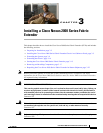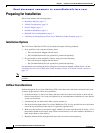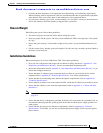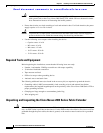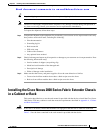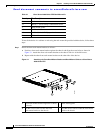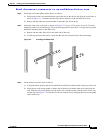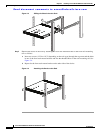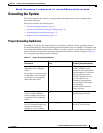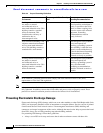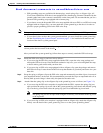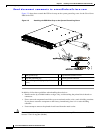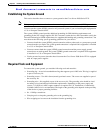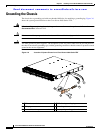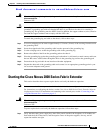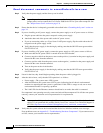
Send document comments to nexus5kdocs@cisco.com
3-9
Cisco Nexus 2000 Series Hardware Installation Guide
OL-19013-05
Chapter 3 Installing a Cisco Nexus 2000 Series Fabric Extender
Grounding the System
Grounding the System
This section describes the need for system grounding and explains how to prevent damage from
electrostatic discharge.
This section includes the following topics:
• Proper Grounding Guidelines, page 3-9
• Preventing Electrostatic Discharge Damage, page 3-10
• Establishing the System Ground, page 3-13
• Required Tools and Equipment, page 3-13
Proper Grounding Guidelines
Grounding is one of the most important parts of equipment installation. Proper grounding practices
ensure that the buildings and the installed equipment within them have low-impedance connections and
low-voltage differentials between chassis. When you properly ground systems during installation, you
reduce or prevent shock hazards, equipment damage due to transients, and data corruption. Table 3-2
lists some general grounding practice guidelines.
Table 3-2 Proper Grounding Guidelines
Environment
Electromagnetic Noise Severity
Level Grounding Recommendations
Commercial building is
subjected to direct lightning
strikes.
For example, some places in the
United States, such as Florida,
are subject to more lightning
strikes than other areas.
High All lightning protection devices
must be installed in strict
accordance with manufacturer
recommendations. Conductors
carrying lightning current
should be spaced away from
power and data lines in
accordance with applicable
recommendations and codes.
Best grounding
recommendations must be
closely followed.
Commercial building is located
in an area where lightning
storms frequently occur but is
not subject to direct lightning
strikes.
High Grounding recommendations
must be closely followed.
Commercial building contains a
mix of information technology
equipment and industrial
equipment, such as welding.
Medium to high Grounding recommendations
must be closely followed.



